
It’s our hope that each of you, our readers, will enjoy and appreciate this article we present about these 4 Startling Atlantic Ocean Sharks. It was our pleasure to gather the information for you. May it provide you with both education and increased awareness.
Certainly, these few species listed herein represent only a portion of the similar marvels in this region. It’s our belief, though, that they serve as excellent representations of the wonders that exist. Check out some of our other articles for similar marvels.
Spiny Dogfish
Spiny Dogfish Facts
- Starting off this article about these 4 Startling Atlantic Ocean Sharks we present the intriguing creature named the Spiny Dogfish.
- The quite evocative term used for the species perfectly serves as one of the common names for one of the best known members of the Squalidae Family of sharks. The animal also remains known by several other alternate names, though.
- These include such equally distinctive names as the mud shark, the spurdog, and the piked dogfish, just to name a few of them. Among professional researchers, though, the amazing creature bears the scientific name of the Squalus acanthias.
- The first known official recognition of this impressive animal as a separate and distinct species occurred in the year 1758. That scientifically important event took place as a result of the efforts of the Swedish zoologist Carl Linnaeus.
- Unfortunately, its situation appears to be somewhat unstable. Due to its population status, as well as other factors, the IUCN currently lists it as Vulnerable. This lamentable status appears on the organization’s Red List of Threatened Species.
- The multiple and varied dangers facing the Spiny Dogfish continue to escalate, regrettably. Among these, over fishing continues to be the greatest threat to its continued existence, since the shark constitutes a commercially fished species.
- Other, newer factors also now pose serious, potentially terminal threats to the creature, though. Habitat loss, due to the actions of man threaten to greatly reduce its range. The ongoing effects of climate change also now pose a great danger for it.
Spiny Dogfish Physical Description
It bears noting that, while remarkably impressive in many ways, sheer size isn’t the strong suit of the amazing Spiny Dogfish. To the great surprise of many people, this marvel of Nature actually remains a very small example of its Order, the Squaliformes.
The species does, however, display a respectable degree of the physiological characteristic known as sexual dimorphism. In the case of this particular representative of its kind, this trait manifests itself in terms of size, with females being slightly greater in length.
Although exceptional individuals do exist, of course, adult males attain an average body length only equaling about 39 in (1 m). Mature females of this fascinating variety of shark, on the other hand, reach an average length of roughly 62.6 in (1.59 m).
Otherwise, both genders strongly resemble each other, presenting the same basic color pattern. Members of both sex display an overall grayish-brown shade, with the upper half of the body being a darker shade, while the underside remains much lighter in color.
It’s the presence of one particular feature, though, that gives the Spiny Dogfish its unique common name. That’s the existence of two very sharp spines that appear on the dorsal area, which the resourceful animal uses as a means of self-defense when threatened.
- Kingdom: Animalia
- Phylum: Chordata
- Class: Chondrichthyes
- Order: Squaliformes
- Family: Squalidae
- Genus: Squalus
- Species: S. acanthias
Spiny Dogfish Distribution, Habitat, and Ecology
To the great surprise of some people, the remarkable Spiny Dogfish inhabits a comparatively wide range of the oceans of the world. Populations of this fascinating fish inhabit many regions. This includes the Pacific, the Atlantic, and also portions of the Indian Ocean.
In whatever part of the world populations of the animal appear, however, all individuals maintain the same basic pattern of behavior regarding choice of habitat. More precisely, this animal evolved to live primarily as a bottom-dwelling species.
With that being said, specimens of this intriguing type of shark have been observed at depths of as much as 2,300 ft (700 m). The great majority of observed groupings or individuals nevertheless make their home at depths of between 160 – 490 ft (50 – 149 m).
Like all other known sharks, the Spiny Dogfish feeds entirely as an aggressive carnivore. Despite its comparatively small size, this animal is no exception to this. It actively hunts a wide variety of prey, including fish, squid, shrimp, crabs, and even jellyfish.
Though some specimens travel singly, the vast majority of members of this species appear in large packs, that can number in the thousands. After mating, live birth occurs an average of an astonishing 22 – 24 months later. A typical lifespan averages 35 – 54 years.
Great White Shark

Great White Shark Facts
- Our next choice for inclusion in this collection of 4 Startling Atlantic Ocean Sharks is the world-renowned Great White Shark.
- The wholly descriptive term serves as one of the common names for a truly incredible variety of mackerel shark. This marvel of Nature also goes by the other common names, though, such as the great white, the white shark, and white pointer.
- In the meantime, it also has the tongue-twisting scientific name of the Carcharodon carcharias. But, regardless of what name one uses to refer to it, this magnficent creature represents one of the oceans primary apex predators.
- This incredibly efficient hunter also has almost no known predators of its own. This holds true throughout the entirety of its natural range. The rare exception, though, would be rare attacks by orcas when other, easier prey cannot be found.
- The breathtaking Great White Shark also exemplifies a very fast and far-ranging hunter. This true marvel of Nature has the ability to reach speeds measuring as much as 35 mph (56 kph). It can also safely dive to depths of as much as 3,900 ft (1,200 m).
- For a variety of reasons, the IUCN lists this majestic creature as Vulnerable. This holds true largely due to such factors as habitat loss and reduction of its prey, due to human commercial fishing practices. However, it also faces danger from climate change.
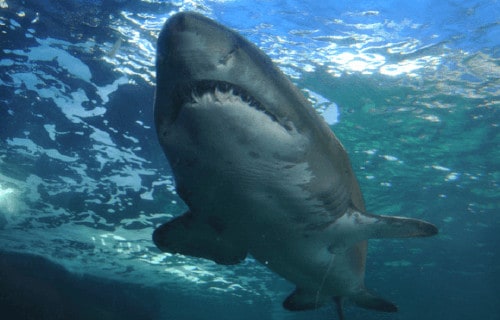
Great White Shark Physical Description
The remarkably impressive Great White Shark earns this status for several reasons, one of them being its sheer physical size. That’s because it attains a maximum known length of 20 ft (6 m) and weighs as much as roughly 5,000 pounds (2,268 kg).
It displays a visually striking color pattern. This holds true due to the fact that, most commonly, it appears grayish in color on the top part of its body and white underneath. In addition, just like many species of sharks, the Great White Shark has multiple rows of teeth.
Like all sharks, it also possesses a special sensory organ which allows it to detect the electromagnetic fields generated by the movement of living animals. In this species, this sense seems to be rather especially acute, allowing it to detect a field of half a billionth volt.
- Kingdom: Animalia
- Phylum: Chordata
- Class: Chondrichthyes
- Order: Lamniformes
- Family: Lamnidae
- Genus: Carcharodon
- Species: C. carcharias
Great White Shark Distribution, Habitat, and Ecology
It bears mentioning that the remarkable Great White Shark has more advantages than just its physical attributes. That holds true because it possesses an almost global range of habitation. This gives it a decided advantage over many species.
As a result, this truly amazing fish inhabits virtually all temperate and tropical waters. This fact often amazes those who encounter it. But, the greatest known concentration of its numbers presently occurs in the waters off the coast of South Africa, in Africa.
The incredibly powerful predator most commonly appears in coastal and offshore areas. This practice, quite unfortunately, frequently leads to encounters with humans. There, though, it rarely, though not never, enters waters with depths of less than 1,000 ft (305 m).
This extremely dangerous creature much more commonly appears at great depths, however. These often reach as deep as 3,900 ft (1,200 m). Additionally, with an average lifespan of 25 – 30 years, it generally prefers to stalk a regular territory.
Given its power and speed, the supremely effective predator quite understandably feeds on a wide variety of prey. In point of fact, this monstrously powerful, and also highly aggressive, hunter will feed on virtually any creature it can find.
The Great White Shark nevertheless does tend to have certain preferences for its choice of prey, as nearly all creatures do. More specifically, these include tuna, dolphins, seals, sea turtles, sea otters, and even, when possible, marine birds.
Porbeagle
Porbeagle Facts
- Next up in this gathering of these 4 Startling Atlantic Ocean Sharks we give you the creation of Nature known as the Porbeagle.
- The comparatively short term serves as the most frequently used common name for this fish. It’s actually a species what’s known as mackerel sharks. However, the intriguing Lamnidae also goes by several other names, in various parts of its range.
- These include such names as Beaumaris shark, Atlantic mackerel shark, bottle-nosed shark, and blue dog. Professionals, though, such as researchers, tend to employ its formal name when referring to it. That’s the relatively simple term Lamna nasus.
- It received that designation due to the work of the French naturalist, Abbé Pierre Joseph Bonnaterre. He accomplished the first official acknowledgement of the creature as a separate and distinct species. This scientifically noteworthy event occurred in 1788.
- Regardless of the term one chooses to use, though, it remains a fascinating animal. It’s also known for being quite fast, and highly active. Yet it’s well-known as comparatively docile. Only a handful of bites by this species have been reported, none serious.
- Sadly, however, the population of the amazing Porbeagle continues to shrink. Though it now enjoys a measure of protection, this applies in only a few areas. Various nations and Unions now ban hunting it, but this only applies within their area of influence.
- The remarkable fish therefore faces numerous threats. These obviously include commercial fishing, as well as sport fishing. Climate change also now poses a danger to it. For all these reasons, the IUCN now lists the species as Vulnerable on its Red List.
Porbeagle Physical Description
The physique of the remarkable Porbeagle quickly impresses those who encounter it. It’s worth noting, however, that it does so for attributes wholly unrelated to sheer size. That’s because this variety of shark only ranks as slightly above average in that regard.
Although populations vary somewhat in size, depending on their region, in many of these one trait stands out. That’s due to the fact that some populations display the physiological characteristic of sexual dimorphism. In its case, though, this manifests in sheer size.
More specifically, females attain a moderately greater length than their male counterparts. As a result of this size disparity, females reach an average body length of approximately 9.8 ft (3.0 m). Males, meanwhile, only average roughly 8.2 ft (2.5 m) in overall length.
Despite the difference in length, though, average weights measure about the same. Most specimens only weigh around 298 lb (135 kg). Exceptional individuals do occur, however. The heaviest known member of the amazing species weighed in at 510 lb (230 kg).
The overall body shape’s often referred to as stout, with males being somewhat more so than females. The elongated snout tapers to a pointed structure. Its eyes further develop as large, and deep black in color. Its mouth also develops as proportionately large and curved.
In terms of coloring, though, the Porbeagle displays a fairly common pattern. The upper surface dislays a moderate to dark gray color. Its underside, meanwhile, typically shows an off white. Some populations also display irregular, dusky blotches across the belly.
- Kingdom: Animalia
- Phylum: Chordata
- Class: Chondrichthyes
- Order: Lamniformes
- Family: Lamnidae
- Genus: Lamna
- Species: L. nasus
Porbeagle Distribution, Habitat, and Ecology
One factor working in the favor of the Porbeagle is its natural distribution. That’s because it has an extremely broad, yet simultaneously specific, range of habitation. It evolved to possess what ichthyologists, scientists who study fish, call an amphitemperate range.
That’s simply a technical term that means three things. Firstly, the animal appears almost globally, within certain paramaters. Secondly, however, those parameters restrict it to the temperate waters of both hemispheres. Finally, its absent from tropical areas.
Within that zone, though, it inhabits a broad range of depths. In this, different populations present varying preferences. Thus, some groupings appear offshore, at depths of as much as 4,460 ft (1,360 m). Others, meanwhile, appear at depths as shallow as 3.3 ft (1m)!
Yet, in all regions this wonder of Nature makes its home in, some individuals display a daily migration pattern, while others do not. Those particular specimens that migrate usually spend the day at greater depths. These then later move toward the surface at night.
The intriguing Porbeagle appears either in small groups or singly. In both instances, it’s also one of the few known fish species to exhibit signs of play. That’s due to the fact that, on occasion, individuals wrap themselves in rolling and unrolling themselves in kelp strands.
Like other sharks, it also evolved as an active predator. It’s opportunistic, as well, feeding on virtually any small or medium-sized bony fish it finds. Small cephalopds, especially squid, additionally form an important part of its diet. Lifespan ranges from 30-40 years.
Oceanic whitetip shark
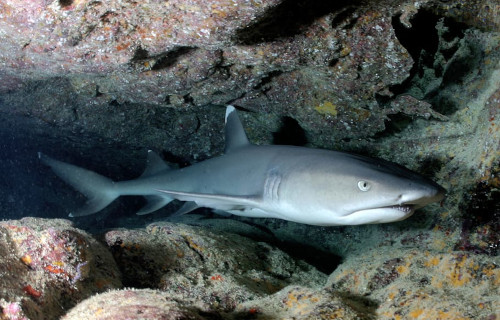
Oceanic whitetip shark Facts
- Finishing up this article about 4 Startling Atlantic Ocean Sharks is the visually distinctive animal named the Oceanic whitetip shark.
- This majestic yet dangerous predator of the depths most frequently goes by the common name we’re using here. Yet, it also holds less often used titles. These include such terms as nigano shark, brown shark, and simply whitetip shark.
- Within the scientific community, however, it’s better known by its formal moniker. But that’s an extremely hard name to pronounce for the layperson. That’s because this marvel of nature bears the complex technical title of the Carcharhinus longimanus.
- A degree of controversy persists inside the halls of science, though, concerning that appellation. The first known formal description of the fish occurred in 1831, due to the work of the French naturalist, René-Primevère Lesson, who gave it a similar name.
- The next description of it, however, took place in 1861, at the hands of the Cuban zoologist, Felipe Poey. He also provided it with a similar yet different moniker. Given this confusion, and still others, the name used here is generally the most accepted.
- Sadly, the population of the remarkable Oceanic whitetip shark measures quite small. It also appears to be continuing to diminish. That state apparently holds true throughout its range. The ICUN thus currently lists the fish as Critically Endangered.
- It faces numerous threats to its existence. Most of these stem from the actions of man. They include such factors as being actively fished for its meat and fins. The creature also now faces the dual dangers posed by habitat loss and ongoing climate change.
Oceanic whitetip shark Physical Description
The mesmerizing Oceanic whitetip shark immediately captivates many who encounter the animal in its native environment. Unlike some species, though, it does so for several reasons. That’s due to the fact that it’s visually impressive due to both its appearance and size.
In that respect, the shark follows a pattern common to many of its relatives. That’s true since it displays a certain degree of the physiological characteristic known as sexual dimorphism. In its specific case, this trait manifests itself purely in terms of physical measurements.
More precisely, the female of the species attains a slightly greater overall size than her male counterparts. This gender of the intriguing fish reaches an average body length of roughly 12.8 ft (3.9 m). These further grow to an average body mass equaling 374.8 lb (170 kg).
Males, however, only attain an average length of body measuring about 9.8 ft (3 m). They do tend to have a slightly stockier build than the females, though. Due to this general development, their body mass is an only slightly lighter average of about 368 lb (167 kg).
In terms of overall appearance other than this, however, both sexes of the Oceanic whitetip shark remain virtually indistinguishable at a glance. The upper body of the fish typically displays a gray-bronze shade. Its lower body, though, generally shows an off-white shade.
Yet it’s the fins of the animal that serve as the source of the common name. Most of these display a bright white tip. Each also presents a mottled pattern among adults, and black in younger specimens. A patch resembling a saddle somtimes appears between two dorsal fins.
- Kingdom: Animalia
- Phylum: Chordata
- Class: Chondrichthyes
- Order: Carcharhiniformes
- Family: Carcharhinidae
- Genus: Carcharhinus
- Species: C. longimanus
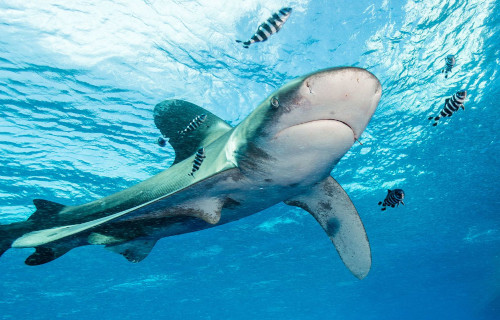
CCL: https://rb.gy/60nbb
Oceanic whitetip shark Distribution, Habitat, and Ecology
The fascinating Oceanic whitetip shark evolved as native to an extremely broad swathe of the globe. The full extent of that zone of habitation might surprise some people, though. That’s because this wonder lives in oceans worldside between latitudes 45 N and 43 S.
The vast majority of this range of appearance consists of relatively to extremely deep waters. The creature also displays decided preferences for the temperature of the waters it lives in, as well. It seems to favor temperatures above 68F (20C), and up to approximately 82F (28C).
Yet it also shows some flexibility in this regard. That’s true since a certain percentage of observed specimens appeared in waters with a temperature of about 59F (15C). The animal does, however, seem to studiously attempt to avoid temperatures lower than this.
Despite mainly living in regions of great depths, though, it spends most of its time in the upper layers of the ocean. Most sightings occur at depths of no greater than 490 ft (150 m). Though most individuals stay offshore, some venture into areas as shallow as 120 ft (37 m).
The beautiful Oceanic whitetip shark typically lives a primarily solitary life. Small, temporary groups do sometimes form, however, for hunting and feeding purposes. The animal also evolved as an active hunter, swimming and seeking out prey by both day and night equally.
As a general principle, it usually feeds on a variety of cephalopods, like small squid, and bony fish, such as oarfish and barracuda. Yet it sometimes varies this, adopting a more flexible diet. At these times, it eats such prey as stingrays, birds, crustaceans, and sea turtles.
4 Startling Atlantic Ocean Sharks
We hope that each of you, our readers, will enjoy and appreciate this article we present about these 4 Startling Atlantic Ocean Sharks. It was our pleasure to gather the information for you. May it provide you with both education and increased awareness.
Certainly, these few species listed herein represent only a portion of the similar marvels in this region. It’s our belief, though, that they serve as excellent representations of the wonders that exist. Check out some of our other articles for similar marvels.
Check kout our other articles on 5 Rare Mind-Blowing Cloud Types, Earth’s Many Stunning Waterfalls, 7 Breathtaking East Coast Wonders, The Mighty Tornado
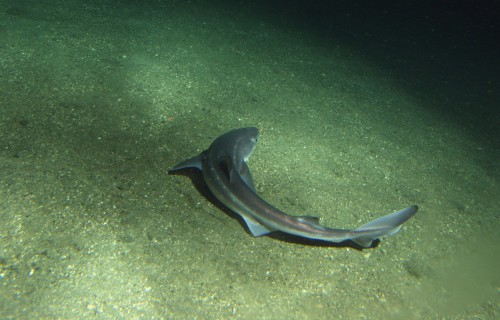
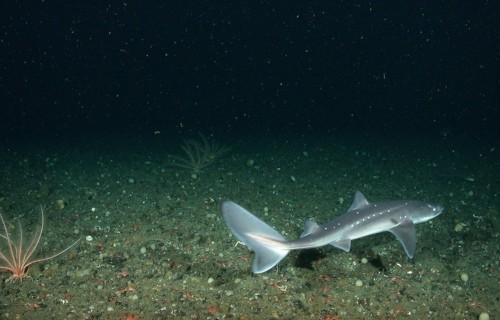
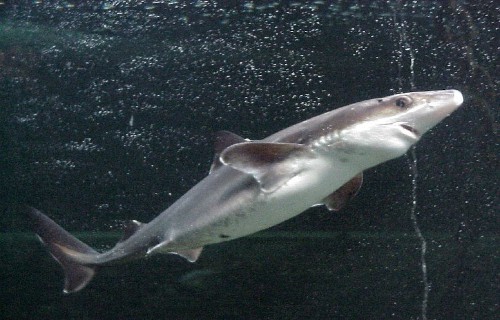
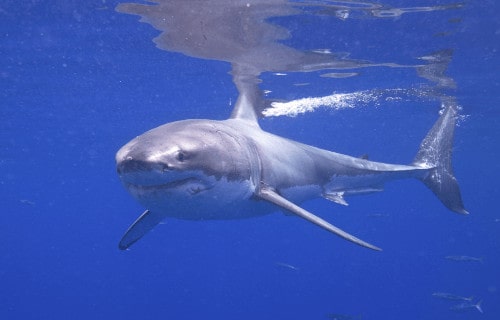
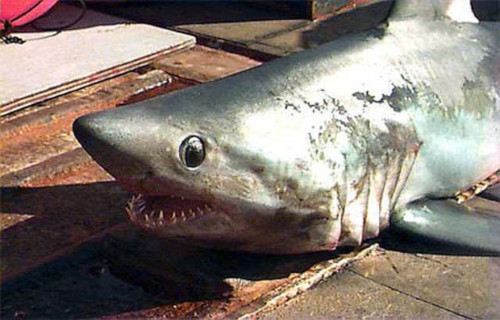
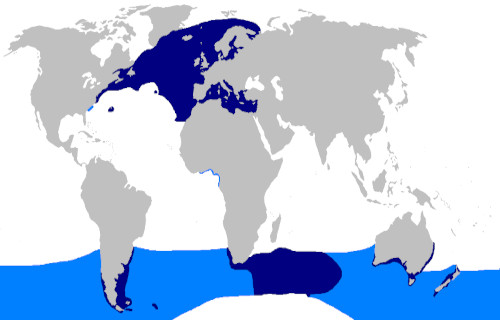
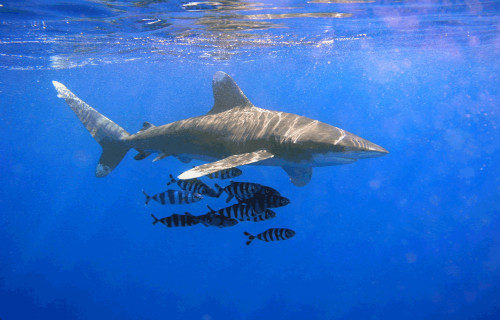









Leave a Reply